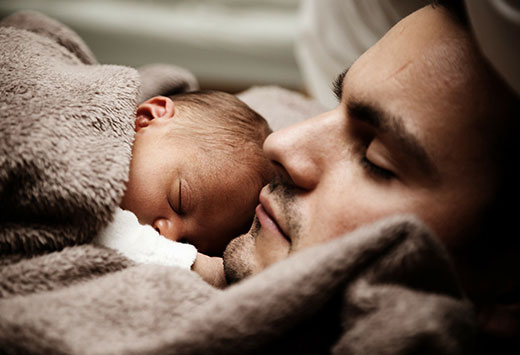The process of adoption can be an exciting, emotion-fuelled experience. As a same-sex couple achieving LGBT adoption, or a couple with fertility struggles, or even single parents, having your dreams of parenthood realized is an amazing experience.
However, post adoption, there naturally is a tricky adjustment period you and your child will need to navigate. Bedtime in particular offers a potential struggle. While sleep routines are a challenge negotiated by all children, bedtime is often much trickier for adopted individuals. Aspects such as attachment and prior history become mingled with the natural childhood anxieties of the dark and imaginary monsters. With sleep being highly important to a child's development, implementing a positive nighttime routine is essential. In this article we’ll be taking a brief look at the ‘No-cry Sleep Solution’, particularly at how this can be tailored to adopted children.
The No-Cry Method
The No-cry Method was developed by Elizabeth Pantley, a parenting expert. Involving the implementation of gentle nighttime routines, this method represents a slower, more calming approach to a positive bedtime experience. The bedtime process becomes another bonding opportunity between parent(s) and child, making the No-cry Method ideal for adoptive families.
The Steps
Below are the basic steps of the No-cry Method. However, it’s important to remember what will always override these suggestions is your knowledge of your child's unique needs. As adoptive children have unique challenges to conquer, you may find adjustments are needed to suit them.
- Consistency: The first step is setting a consistent bedtime and sticking to it. This is important for adoptive children, as their prior home may have contained an unreliable schedule at its core. Therefore, having a predictable routine becomes soothing.
- Naptime: If your new addition is of napping age, it’s important to schedule routine naps. While you may be enjoying the peace and quiet, or are happy your child is resting, it’s important to keep naps at a reasonable length, to ensure the child is not overly awake at bedtime.
- Peace: When developing your bedtime routine, make sure it is a soothing as possible. Include options such as a bath, story time, or soothing scents. Stick to this routine every night.
- Settling Down: For adoptive children, a bed can be a symbol of fear, of being left alone in the dark for extended periods of time. Try letting your child fall asleep before placing them in bed. This helps remove the distraction of bed-based fear, allowing the child to focus on being calmed to sleep.
- Crying Out: If your child starts to cry, or call out for you, comfort them until the crying stops, before settling them back in bed. An adopted child will often call out to you for fear of having been abandoned, so a few moments spent with together is often enough to settle them back to sleep. Whenever the child cries, repeat this process.
Stick to the Plan
As with many parenting techniques, consistency is key. Being determined and repeating steps every night will often yield positive results. However, it’s important to monitor your child's responses. If steps seem to be overly distressing for them, then you may need to rethink the parenting method implemented.
When creating a positive parenting structure post adoption, routine really is the most precious gift you can give to your new child. Helping them to confront their fears, and giving them a sense of order and stability as well as your unconditional love, will help your child to thrive as part of your family.




